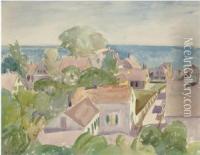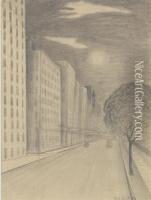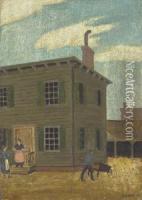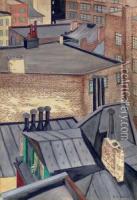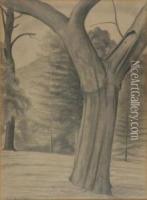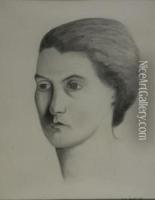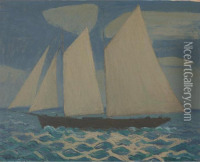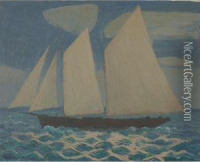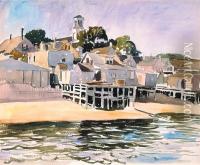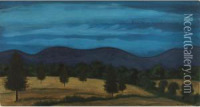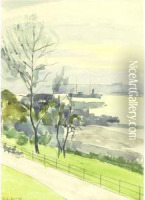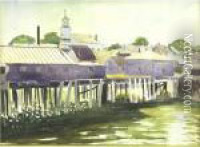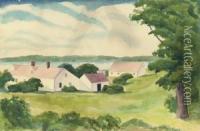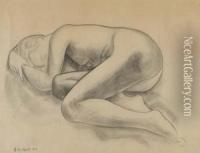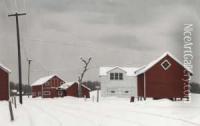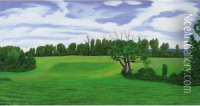George Copeland Ault Paintings
George Copeland Ault was an American painter known for his meticulous, precisionist-style depictions of New York landscapes and architecture during the early 20th century. Born on October 11, 1891, in Cleveland, Ohio, Ault spent a significant portion of his childhood in London, where he began his formal art education. He studied at the Slade School of Fine Art and the St. John's Wood School of Art before returning to the United States in 1911.
Ault's early work was influenced by the modernist movements of his time, including Cubism and Precisionism, a movement that celebrated the new American landscape of skyscrapers, bridges, and factories, often with a sense of order and geometric clarity. He became associated with a group of artists known as the 'Precisionists,' which included Charles Sheeler and Charles Demuth, though Ault maintained a distinct personal style.
The 1920s and 1930s marked a productive period for Ault. He exhibited his work at prominent venues such as the Whitney Studio Club and the Downtown Gallery in New York. His paintings from this period often featured the rural landscape of upstate New York, where he had moved with his wife, Louise Jonas Ault. The couple experienced financial difficulty during the Great Depression, which deeply affected Ault's mental health and artistic output.
Ault's later work is characterized by a darker mood and an increasing focus on the play of light and shadow. His paintings became more somber following the tragic deaths of his brothers and the suicide of his mother. Ault himself struggled with depression and alcoholism. His paintings from the 1940s, such as 'Bright Light at Russell's Corners' (1946) and 'August Night at Russell's Corners' (1948), are considered some of his finest works, capturing eerie, nocturnal scenes of isolated buildings with an air of haunting stillness.
Tragically, Ault's life came to an untimely end on December 30, 1948, when he drowned under mysterious circumstances in Woodstock, New York, where he had been living. While his death was ruled an accident, there was speculation that it may have been a suicide. Despite his struggles, George Copeland Ault left a lasting legacy as a painter who captured the tension between the old and the new, the rural and the urban, during a transformative period in American history.

